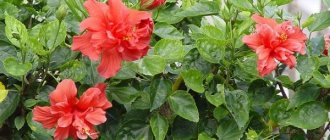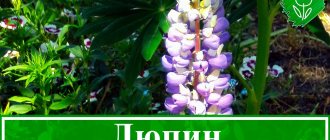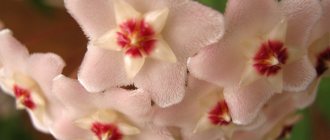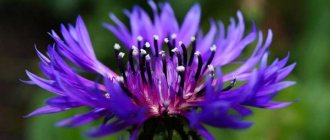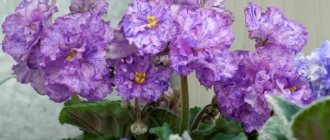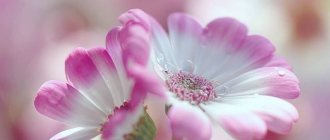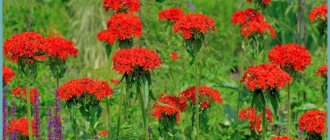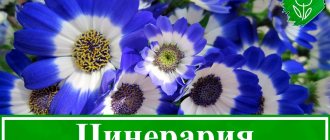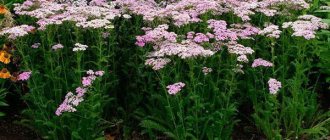Plants » Flowers
0
307
Article rating
Kira Stoletova
Hoya Pubicalix is considered one of the most striking representatives of tropical plants - it belongs to the Lastovneve family, native to Australia, India, and southeast Asia. The flower is successfully cultivated at home. Let's consider its characteristics, popular varieties, as well as the rules for caring for them.
Hoya publicix splash
Possible problems during cultivation
Problems with Hoya Pubicalyx often arise, especially in the autumn.
Pests
Scale insects, which multiply especially quickly in dry air, cause great harm to hoya. They eat fleshy leaves and lay their larvae on them, the plant withers, turns pale and dies.
Another pest is the mealybug, which leaves white mucus on the leaves. These whitish insects are noticeable on the foliage and are completely removed by washing the flower with a soapy solution.
Powdery mildew is caused by insect pests
Other problems
Due to stagnant moisture and lack of loosening of the soil, Hoya Pubicalix is prone to root rot and gray mold.
Too dry air causes the leaf blades to dry out, and yellowing or paleness may indicate a lack of certain mineral elements in the soil.
The most famous and decorative plant species are:
- Hoya Pubicalix Silver Pink - has variegated brown-scarlet foliage and lush pale pink inflorescences;
- Splash is a Swedish variety with umbrella inflorescences and pink flowers;
- Hoya Pubalyx Red Button is the most famous variety, with double red buds;
- Black Dragon - a variety with dark gray outer petals and scarlet in the middle;
- Chimera is a bush with lush spherical inflorescences, the petals of which are painted in grayish-lilac shades;
- Royal Hawaii Purple is a shrub with dark green glossy foliage and black and red flowers;
- Beauty is a very beautiful flower with fluffy cream petals.
Wax ivy can outshine many indoor plants with its beauty.
Not all flower growers know about the Hoya Publicis flower, how it forms buds and blooms. But varieties such as Silver Pink and Red Button can outshine many indoor flowers with their beauty and exoticism.
Signs and superstitions
Hoya Bella's popularity as a houseplant has declined somewhat in recent years. It's all about the prejudices associated with plants. Some believe that liana-like plants, including hoya, are extremely undesirable in residential areas. They drain energy from homeowners, provoke scandals and quarrels, and also block cash flows. Some people even complain of poor health, loss of strength and performance if they spend a long time in the same room with Hoya Bella.
For your information! Proponents of Feng Shui theory believe that Hoya Bella is a very positive culture that protects its owner’s house from the evil eye, envy and enemies.
The choice of Hoya Bella variety depends on the decorative properties and purpose of growing the flower. Flower growers prefer fleshy hoya because it easily reproduces indoors and is less demanding in care. If you want to keep a beautiful flower in your house that will replace a bouquet, then beautiful hoya will serve as a good alternative for this purpose.
Possible problems in growing
Aglaonema silver13 photo description of varieties Silver Bay and Silver Queen Silver Frost and Silver King diseases and pests of Aglaonema care at home
Compared to its relatives, the culture has good immunity and rarely gets sick.
Pests
The main parasitic insects that attack the vine are:
- spider mite;
- aphids;
- mealybug;
- scale insect.
If pests are detected, the foliage is mechanically cleaned with a soap solution and sprayed with an insecticidal composition. The treatment is done several times until the parasite is completely destroyed.
Mealybug
Other problems
Liana does not tolerate excessive dryness of the earthen clod. After the buds appear, the containers cannot be rearranged. To awaken the plant after hibernation, you will need to take a bath by immersing it in water (30 degrees) for an hour. Strengthening the immune system is carried out with a decoction of potatoes.
Common cultural diseases include:
- bacterial infection - causes softening, stickiness of foliage and shoots, requires treatment with store-bought products containing copper;
- viral - determined by thickenings and spots on the foliage, practically cannot be treated, the plant slowly dies and requires being sent to quarantine;
- fungal - provokes rotting of the root system and stunting of growth, requires replacing the soil and treating the roots with activated carbon powder.
Important! Yellowness of the leaves indicates a violation of the maintenance rules: excessive waterlogging or drying out of the soil, burns on the leaf plates from the sun, staying for a long time in a cool room under drafts
Causes of common problems
Like most plant crops, wax ivy has characteristic changes in condition that indicate the presence of a problem. The most common such changes are:
- Falling leaves, lack of growth and the presence of a whitish coating on the stems most often indicate a spider mite.
- The absence of flowering indicates violations in the matter of care. First of all, lighting and temperature conditions.
- The appearance of spots on the leaf blades indicates sunburn, the use of cold water when watering, or excess fertilizer.
- Deformation of leaf plates and shoots indicates that the usual watering regime is insufficient.
- The presence of dark dots on young leaves is a characteristic phenomenon for Hoya.
- The edges of the leaf blades become brownish in color if there is an excess of nutrients or dry soil.
Flower growers recommend planting Hoya for people who do not have the time or experience in growing any kind of vegetation.
The requirements of “wax ivy” are insignificant and do not take much time, and the plant itself can green up a city apartment and give it some charm. CherryLink plugin not found
Varieties
Carnosa
Chinese rose (hibiscus): home care, cultivation, flowering, photos, types, description of varieties, signs
Description - this species has dark green leaves, on which there are inclusions of white to silver shades. There are variegated varieties that may have multi-colored stripes in the center and along the edges of the leaf pulp. The inflorescence of the plant is collected in a cluster, which can have up to twenty flowers of white shades with red in the middle.
Features - Hoya flowers can secrete nectar so much that it can drip. This species also has a feature associated with daylight hours. By the evening, the aroma from flowers may be more intense than during the day or in the morning. The plant is also capable of forming new inflorescences directly on the old one.
You can watch a review of Hoya Carnose in this video:
Kerry
Description - this type of plant will most need additional support, since the leaves are quite large in diameter and can be half the size of an adult’s palm. This plant is also called “green heart” because the leaves are heart-shaped. There are also variegated varieties. The inflorescences are white and red.
Features - usually for Valentine's Day, hoya is sold in pots of one large leaf. If you take care of the leaf, water it or make a small greenhouse, then soon it will give roots and new shoots, and after a while it will grow into a large and beautiful vine.
You can watch a review of Hoya Kerry in this video:
Compacta
Description - this species is a variety of the Hoya carnosa species. The dark green leaves have a curled appearance and can therefore be associated with curled hair. There are varieties that have two-color leaves. Leaves grow on liana branches. The inflorescences are small and compact, as is clear from the name of the plant. They have a pale pink tint.
Features - the main feature is the type of foliage of this species. It is extremely rare to find such curled leaves as those of this plant.
You can watch a review of the Hoya Compact in this video:
Lacunosa
Description - this species is otherwise called “curved” because the leaves are slightly curved at the edges, it has dark green foliage with white specks. The inflorescences in the cluster are white, round, “hairy” with a small star in the middle, yellow to cream in color. This vine grows very quickly in length.
Features - the advantage of Lacunosa is the delicate aroma from the flowers, which can fill the entire space of the home.
Linearis
Description - the type of plant has intricately shaped leaves that look more like sharp needles. The foliage is gray-green in color with a small edge. The inflorescences are cluster-shaped, cream and white in color, with small fibers.
Features - emits an aroma that can be compared to the smell of vanilla or lily.
Multiflora
Description - Hoya multiflora, or as it is also called multi-flowered, grows in the form of a bush, unlike many other species that have an ampelous shape. The leaves are large and resemble the foliage of a coffee tree. Inflorescences in the form of a pointed large yellow star and a small, white one located in the center.
Features - the plant is very suitable for beginner gardeners, as it is quite unpretentious in care and can bloom all year round.
Obowata
Description - the plant has large, round leaves of a rich green color. The surface of the leaves is covered with silvery inclusions. The inflorescences are cluster-shaped with up to thirty small flowers of a soft pink hue for the large “star” and red-crimson for the small one.
Features - the aroma from flowering resembles the smell of a rose. The plant is easy to care for and blooms profusely. It can also be easily rooted.
Bella
Description - the leaves have an elongated shape similar to a rounded arrowhead of light green color. The inflorescences are small, with seven to nine flowers in a cluster. The color of the large “star” is white, and the small one is burgundy or crimson.
Features: long flowering time. Each “umbrella” of inflorescence can please the eye for more than a week.
Flavida
Description: The leaves are smooth, oval-shaped and pale green in color. The inflorescences are yellow-orange with a small star in the middle.
Features: The aroma is very weak. With prolonged exposure to the sun, the foliage may turn slightly red, which is considered normal.
Description of species and their photos
Silver Pink
The variety is distinguished by its variegated leaves .
Young leaves have red and brown shades, then the leaves darken and turn green. The leaf blade is covered with a variety of asymmetrical spots and streaks of a silvery hue. The flowers are curly, voluminous, two-tiered in structure, star-shaped, bright red, small in size - up to 2 cm in diameter. Pedicels are long, curved. The flowers have a sweet aroma. The inflorescences are lush, numerous, containing up to 20–25 flowers. Flowering lasts up to 10 – 14 days.
Useful video about Hoya Silver Pink
Splash
A hybrid variety - cultivator, very popular among liana lovers, bred in Sweden. It blooms in large inflorescences - baskets , connecting up to 20 - 25 flowers.
The leaves are oblong, up to 14 cm in length, up to 4 - 5 cm in width, gray in color, with gray marks - strokes, randomly located throughout the leaf. The structure of the leaves is dense, smooth, the apex of the leaves is sharp, the base is blunt. The inflorescences are large umbrellas, up to 8–10 cm in diameter in an adult flower. The flowers have a decorative shape and are bright crimson. The center - the crown of the flower - is light, looks contrasting against a dark background. The flowers have a pronounced aroma. The tips of the petals are pointed in shape. The petals are smooth and glossy above, fleecy below. The stems are long lashes, curl well, smooth in structure, fragile, up to 3 - 4 mm in diameter. Internodes are long – 15 – 20 cm.
The variety has a specific aroma ; the hybrid species was bred by Genevieve McDonald in Florida.
The leaves are oval-oblong, slightly smaller than those of the Silver Pink variety. The structure of the leaves is smooth, dense, pointed ends. The color of the leaves is light green with randomly located streaks of silver. The veins on the leaves are practically not visible. The flowers are covered with gray, thick, short hairs; the flower itself is bright red. Thanks to the fleecy coating, it has a “plush” structure. The crown of the flower is five-pointed, bright red. Inflorescences - umbrellas collect up to 20 flowers, up to 10 cm in diameter. The stems are long, curling, and arranged roundly. Propagated by cuttings.
We wrote about all varieties and types of Hoya in a separate article.
Home care
A unique decorative variety of Hoya crimson queen vine: description, cultivation, care, diseases and pests
Brachychiton does not require special attention or maintenance. It is enough to follow certain rules of care.
Illumination
The plant loves bright light and tolerates direct rays of the sun well, but on the hottest summer days it is better to shade the flower pot. Eastern and western window sills are best suited for growing. On northern windows and in winter, brachychiton does not have enough lighting, so it is necessary to install illumination with phytolamps. They are placed at a distance of 50–60 cm from the pot, and the daylight hours are artificially extended to 8–10 hours.
Temperature
The optimal temperature in spring and summer is 23–27 degrees. With the onset of autumn, the temperature is gradually lowered, and in winter the plant is kept at a temperature of 12–16 degrees.
Brachychiton is also resistant to lower temperatures, and also grows well without a dormant period, but less actively.
In spring and summer, the tree is taken out to the loggia or garden. But they protect from precipitation.
Important. The room with the plant is ventilated year-round, as the plant loves fresh air.
How to water?
In spring and summer, brachychiton is watered abundantly, but only after the top layer of soil has dried.
With the beginning of autumn, the amount of water applied is reduced.
And with the onset of the dormant period, water rarely, while allowing the substrate to dry well.
At this time, the plant’s leaves fall abundantly; some gardeners try to prevent the process by watering the flower a lot.
This should not be done under any circumstances, as such actions can lead to rotting of the root system and the development of trunk porosity.
Plant fertilizer
From the beginning of spring until the end of summer, the flower is fed once every 3 weeks with special mineral fertilizers for cacti, which are diluted according to the instructions.
Attention. With the arrival of autumn and until the end of winter, fertilizing is stopped, as it can only cause harm.
Trimming
The trunk of the plant becomes very elongated during growth, which leads to a deterioration in its decorative properties and loss of compactness. Therefore, annual pruning is carried out in February - March. Young elongated shoots are removed. In this case, the process is carried out gradually so as not to harm the plant. First, one shoot is removed, and the next one is removed when the previous cut has healed.
Carry out the procedure very carefully, as the plant juice can cause skin irritation
Transfer
Brachychiton is replanted after the roots have completely entwined the earthen ball. Young specimens are replanted annually, adults – once every 3–4 years. The pot should be larger than the previous one by no more than 5 cm. The pot should be stable; ceramic and clay materials work well.
The substrate can be purchased at the store or prepared independently; for this, leaf soil, humus, sand and peat are mixed in the same ratio.
The process consists of several steps:
- A drainage layer and some soil are poured onto the bottom of the pot.
- The plant is carefully removed, the roots are lightly shaken and washed under warm water.
- Brachychiton is inspected, and if there are rotten roots, they are cut off.
- Afterwards, the tree is placed in the middle of the flowerpot and covered with earth.
Then water abundantly and apply the first fertilizing.
Reproduction
Brachychiton can be propagated at home, like other plants. There are two ways:
- Cuttings. During pruning, cut apical cuttings longer than 10 cm are treated with Kornevin. Then they are planted in a container with a peat-sand mixture. Cover with film or glass. Place in a warm place, periodically ventilate and moisten. Rooting occurs within a month. Afterwards the plant is transplanted to a permanent place.
- Seeds. This method is rarely used. Seeds are bought at a flower shop. Then they are soaked in phytohormone for a whole day. Then they are sown in a sand-peat mixture. Keep in a bright room at high temperature. When they reach 2–3 cm, they are picked into separate pots with a diameter of 9 cm.
Methods for propagating wax ivy
The easiest way to propagate home vines is by cuttings.
Under favorable conditions, they take root and grow without problems. Carefully cut a branch with a pair of leaves, and the cutting should have at least 2 nodes. Roots and leaves are formed in them. Next, place part of the plant in a dark vase and leave it in a warm, bright place. But do not forget to add fresh water, as moisture evaporates quickly. A strengthened young plant can be transplanted into a pot with a special substrate.
Propagation of wax ivy by cuttings gives excellent results.
But you should be aware that they should be short, since parts of the hoya that are too long are prone to drying out. It will be easier to root the vine if you maintain the room temperature at least 22 °C, and you also need to regularly spray the cuttings with water from a spray bottle.
Some gardeners are interested in how to propagate hoya with leaves
. The fact is that the petioles at the base of the leaf contain a certain number of roots. When placed in a nutrient substrate, this part of the plant takes root in the soil, but shoots are rarely sprouted. You can additionally stimulate the leaf by adding plant cell-based hormones to the water for irrigation.
You can also grow hoya from seeds at home. Fresh seed should be slightly dried and placed in a well-permeable substrate. For example, you can prepare a mixture of soil and sphagnum
It is important to know that grains should be sown quickly, otherwise they will lose their viability
As a rule, seeds germinate 1 week after placing them in a nutrient medium. Seedlings should never dry out, which is why they are regularly moistened with warm water. Young plants require a sufficient amount of light, so it is best to place the sprouts in a spacious container on the windowsill. 3 months after germination, the vines can be transplanted into separate pots. At this point, the hoyas have powerful roots and leaves.
Kinds
There are about 300 varieties of hoya, but only a few of them can be grown indoors.
| View | Description |
| Caudata | It lives in Thailand and Malaysia. The flower was first discovered in 1883. It has dense, ovate-shaped leaves with a heart-shaped base. There is spotting of different colors - from pinkish to dark green. The lower part is reddish, the upper part has a silver inclusion. The flowers are small, odorless, and the color is white and red. |
| Silver splash | The leaf cuttings are dense and contain thick fluff, which thins out as the flower grows. The buds are white and red. The leaves are reddish in color. |
| David Cumming | A rare type of wax ivy. It differs from others in having salmon-pink flowers with a bright yellow center. In the evening it emits a pleasant caramel aroma. The foliage is lanceolate, the veins are barely visible. |
| Calistophylla | The leaves are wide and have dark green veins. The flowers are milky yellow, there are from 18 to 20 pieces in the umbrella. During flowering it emits an unpleasant odor. |
| Imperialis | The largest variety of wax ivy. Habitat: Malacca Peninsula. The flowers are dark red in color, with a white center. During twilight it emits a pleasant aroma. |
| Locky | Endemic plant of Vietnam. With high-quality care, it can delight you with pearl-colored flowers throughout the year. The aroma of ivy is reminiscent of chocolate and intensifies in the evening. |
| Lacunosa (concave) | The leaves are dark green, diamond-shaped, the edges are curved to create a depression, which gives the variety its name. The flowers are collected in inflorescences of 15-20 pieces, velvety white with a yellow crown in the middle. |
| Shepherdy | The flowers are pale pink in color with drooping corollas. The foliage is long and narrow, boat-shaped, with a bright green vein in the center. |
| Carnosa (meaty) | Liana reaching a length of 6 meters. The leaves are small, oval-shaped, but quite dense, with a waxy coating present. They are dark green in color with silver strokes. The flowers are fragrant, white and pink. |
| Beautiful (Bella) | Bella's shoots constantly hang down, and the shrub itself is highly branched, so the plant is classified as an ampel plant. The leaves are small, ovate-lanceolate, and green in color. The buds are white, there are 7-9 umbrella inflorescences. |
When and how does it bloom
Hoya flower - what the varieties Carnosa, Kerry, Bella, fleshy, multiflora look like
Hoya (Hoya) Pubicalix blooms for a short time, but surprises with the unusual shape and appearance of its buds. The inflorescences are spherical in shape, with up to 30 small buds on each of them. The most common flowers are pink, scarlet and grayish. The surface of the buds has small fibers that make the flower velvety to the touch.
Blooming Hoya Pubicalix Black Dragon
The flowers are shaped like a perfect five-pointed star. The lower row of petals is almost twice the size of the upper one.
Flowering period
On average, the Hoya Pubicalix species blooms from 1.5 to 2 weeks. Some varieties can bloom for a month, but this is rare in indoor conditions.
general information
Hoya is a genus of tropical evergreen plants of the Lastovniaceae family, named after the English gardener Thomas Hoy, who worked in the greenhouses of the noble Duke of Northumberland.
Plants of this genus differ in appearance, origin and color of flowers, but they all have certain similar features. Thus, all hoyas are characterized by fairly rapid growth, endowed with green, pointed, oval-shaped leaves and lignified shoots with aerial roots.
Their flowers are fragrant, bisexual, collected in umbrella-shaped inflorescences located on stem branches.
What it looks like, what family it belongs to
Hoya Pubicalix belongs to the Kutrovaceae family - it is a perennial plant that grows in the form of a vine. The flower has long and dense oval-shaped leaves, which are painted bright green with small gray spots on the surface. The length of the plates can reach 15-20 cm, and the width is only 4-6 cm.
Pubicalix is highly decorative
Briefly about the history of appearance
Although Pubicalix is found in the wild on the coasts of Australia, the habit of growing it indoors came from Asian countries, especially India.
Homeland of the plant
The habitat of the shrub is tropical Australian and East Asian forests.
Varieties
The Lacunosa species has several artificially bred varieties. Each of them has characteristics of growth, flowering and maintenance. To successfully grow a flower, you need to decide on its variety so as not to make mistakes in creating favorable conditions for it.
Eskimo
The variety is interesting in the shape of its leaves - they are small and heart-shaped. True, they acquire this appearance only in bright light. In partial shade they stretch out and lose their decorative effect. There are two varieties - just Eskimo and Eskimo Silver. The latter is distinguished by a silvery coating on the leaves, the so-called “splash”.
It blooms with white graceful buds with a pleasant hyacinth aroma. The variety received the name “Eskimo” for the color and shape of the flowers - they are creamy-white, fluffy, very reminiscent of the famous ice cream. The aroma intensifies at night. For active flowering, the plant needs a lot of light.
Laos
The leaves are large, dense, with cream-colored specks. In the light they turn brown and the specks turn white. The vines are powerful and do not break under their own weight. They do not require special support. The variety has a long flowering period. The aroma of the buds is reminiscent of incense.
Hoya lacunosa popsicle photo
Heart shape leaf
The shape of the hoya leaves of this variety is heart-shaped, but it becomes so in bright light. In the shade, the leaves begin to stretch and lengthen. The emerald green color gives way to pale turquoise. The flowers are white with a delicate aroma that intensifies at night.
Bold
The leaves have an interesting pattern of depressed and protruding areas. The vines do not curl, but hang down in a cascade. Flowers are spherical, cream and white. The peduncles are elongated, the buds are collected in inflorescences of 15-18 pieces. The aroma of flowers is reminiscent of chocolate.
Tove
The variety is distinguished by pale purple flowers and diamond-shaped leaves up to 6 cm long. In good light, the leaves turn burgundy. Hoya Tove does not tolerate heat; at high temperatures it begins to hurt and is affected by pests.
Langkawi Island
A miniature variety with the smallest leaves of a dark, almost black color. There is a light silvery splash across the surface of the sheet. It blooms with white, fluffy buds, with a cream star in the middle. Has a pleasant incense scent.
Snow Caps
The castings are elongated, light green, with white splashes. The vines reach 5 meters in length, and aerial roots form on them in large numbers. The flowers, as is clear from the name of the variety, resemble snow caps. They are fluffy, white, smell pleasant and strong.
Hoya Lacunosa Royal Flush
Royal Flush
The leaves can change color depending on the lighting. In partial shade they are green, monochromatic, without inclusions. In the light, the leaf acquires a bronzed tint; in good light, silvery specks appear. It blooms rarely and only with excess sun. The variety is resistant to diseases, both bacterial and viral.
Briefly about the diseases characteristic of this flower
The risk zone is autumn, when the temperature drops sharply, light becomes insufficient, and air humidity rises.
You should not water the flower abundantly during this period, as rot or mold may appear. The substrate needs to be updated - the top moldy layer is removed, the pot is treated with a vinegar solution. If the lesions are severe, a transplant is required. It is necessary to reduce watering, add lighting with special lamps, and treat the substrate and leaves with fungicides.
But placing flowers near batteries is also not recommended. If the air gets too dry, the leaves will begin to turn yellow. The affected leaves are cut off, and the flower itself is fertilized with potassium mineral fertilizers. You can feed with simple potato broth.
The most common pest for Hoya Publicix is scale insects. It is collected by hand, the leaves are treated with soapy water. Alcohol treatment of leaves helps prevent scale insects.
Hoya Publicix - looks great in hanging flowerpots and compositions with various supports. In order for a flower to develop and bloom quickly and well, it requires a lot of effort and competent regular care.
Planting and care
To plant hoya, prepare a stable pot. At home, the plant is replanted every 1-3 years. Since the crown grows quickly, reliable support is necessary. The soil must be light and loose, with good water and air permeability. It can be composed from:
- peat;
- sphagnum moss;
- perlite;
- garden soil.
In order to admire flowers more often, the container is chosen to be quite small.
Lighting. Hoya needs bright, diffused light. She will look good on the eastern or western windowsill, as well as in the center of the southern room
During the budding period, it is very important not to move the plant. Even turning around its axis will cause the buds to drop
Temperature. The flower does not tolerate heat well. In summer it is comfortable at +17…+25°C. In winter, it is necessary to move the plant to a room with a temperature of +10...+15°C. Drafts and sudden cold snaps negatively affect the appearance, as some of the leaves fall off.
Humidity. Hoya adapts well to normal indoor humidity, but responds gratefully to regular spraying and bathing. During the flowering period, they refrain from water procedures. Wax leaves need to be periodically wiped from dust.
Watering. Water should not stagnate in the pot, however, severe drying out of the soil is undesirable. It is recommended to water the soil with soft, settled water 1-2 times a week.
Fertilizer. Twice a month, from March to October, Hoya is fed with a universal mineral complex. The solution is poured into the soil away from the roots.
Crown formation. A long vine or branched bush needs support. For flexible shoots, rings, spirals or threads are used. You can also let the long vines simply hang from the planter. To make the stems branch, pinch the ends.
Features of home care
Hoya lacunosa - types Eskimo Silver and Royal Flush
Caring for Hoya is not difficult, the main thing is to create optimal climatic conditions.
Temperature
The flower does not tolerate heat well, so it is not recommended to increase the temperature above +25 degrees. During the rest period it is lowered to +18 degrees.
Lighting
The daylight hours should be long, but it is advisable to avoid bright lighting. It is best to place the pot not on the southern, but on the western and northern windows.
It is better to place the plant on western and northern windows
Watering
Tropical shrub requires abundant and frequent watering. In summer, hoya is watered every 2-3 days; during dry periods, the procedure is carried out daily. With the arrival of winter, 1 watering per week is enough.
Spraying
Spraying is a must; it can lower the temperature and moisten dry air.
Note! Spraying in the shower also helps clean the leaf blades of dirt and prevent pests.
Humidity
To keep the flower healthy and decorative, you need to maintain high humidity in the room - at least 80%.
Priming
Ready-made substrates for succulents and cacti work well. At home, the soil mixture is prepared from light turf soil, humus, crushed tree bark, perlite and charcoal. Before planting, the bottom of the pot must be covered with drainage material.
Feeding
It is most effective to use ready-made complex mineral fertilizers as fertilizers. It is important that they have a lot of potassium, nitrogen and phosphorus. It is best to feed the plant in liquid form once a month.
Types of Hoya
The most common houseplants are Hoya Kerra and Fleshy.
Hoya Kerrii has shoots that can reach 2 meters in length.
But it is not the flexible creeping shoots of the steeplechase that attract attention, but the large leathery leaves in the shape of an inverted heart. The length and width of the leaves of this hoya reach 15 cm, and their color - rich, bright green - creates a feeling of freshness. The umbrella-shaped inflorescences are very elegant
The umbrella-shaped inflorescences are very elegant.
They contain numerous white flowers with a beautiful dark center and a base creamy color. The species grows slowly, remains stable in indoor culture and is well managed. In addition to the base plant, the variegata form with cream leaves is also very popular.
The more modest-sized fleshy hoya (Hoya carnosa) also deserves the attention of gardeners. This plant is originally called wax ivy. The shoots of the vine grow only up to 1 m, but it will outshine its fellows in the canopy culture. An elegant, if not graceful, plant needs a garter, flaunting fleshy, rather dark glossy leaves of a pointed shape, smaller than those of other species.
If you look closely, you can see small whitish and yellowish spots on the leaves of wax ivy. This hoya forms dense bushes and its leaves are evergreen. The inflorescences sit on short stalks, in small umbrellas. The individual flowers of wax ivy are very beautiful, star-shaped with a red crown in the center, giving the entire inflorescence a variegated appearance. In addition to the basic type, there is a more small-leaved Hoya of the compact form.
It is also worth paying attention to other types of hoya:
- The ampelous small-leaved beauty Hoya bella is a dwarf species that, although less common, is also very decorative. It is not so lush, but more densely leafy, with beautiful oval-shaped leaves up to 3 cm long with a pointed tip and numerous small drooping star-shaped flowers with a crimson center.
- Hoya imperialis (Hoya imperialis) is a climbing species with pubescent shoots, large oval leaves up to 20 cm long with an edge rounded at the base and pointed at the apex. The flowers are collected in hanging umbels, pink-red, with a pubescent crown, seeming like a shining vision.
- Hoya multiflora (Hoya multiflora) is a compact species with narrow, up to 14 cm leaves, unusually thin, prominent veins and yellow-white flowers, in which the outer star seems to be bent back. This hoya is famous for its lemon scent, flowers reminiscent of shooting stars, collected in inflorescences of up to 40 flowers each.
Hoyas are vines that are not that difficult to grow. But they require really careful care, constant monitoring and careful correction of conditions at the slightest sign of “dissatisfaction.” These beauties need sensitive, caring owners who can satisfy all their needs and provide the necessary care.
Hoya beautiful (Hoya bella). Peter GHoya majestic (Hoya imperialis). DougHoya multiflora (Hoya multiflora). Doug
Description
Hoya pubicalyx differs from other species in the following description:
- stems are cylindrical, curly, the length of internodes is about 20 cm;
- leaves are fleshy, leathery with a smooth surface, oblong-oval in shape, 10-15x4-6 cm in size;
- the flowers are fragrant, small - 1.8 cm in diameter, collected in umbrella inflorescences of 8-9 pieces;
- the petals are covered with dense pile, pointed and curved at the tips, the color depends on the variety;
- In the center there is a crown with a circumference of 10-12 mm, light pink in color.
Common diseases and pests of Hoya pubicalix
The most dangerous period for tropical indoor plants is autumn, when there is a significant drop in temperature, an increase in air humidity, and daylight hours become shorter.
If you do not change the watering regime and give the flower the same amount of moisture as in summer, the risk of rot and mold formation is high. When the top layer of the substrate becomes moldy, you should limit watering the hoya, remove the contaminated part of the soil and treat the container with a solution of acetic acid. In case of severe damage, more drastic measures are required:
- the frequency of watering decreases;
- The plant should be provided with additional lighting - special lamps are installed;
- the soil and foliage of the vines are treated with fungicidal preparations.
You should not place containers with hoyas next to heating appliances. Due to dry air, their leaves may turn yellow. If this happens, you should remove the damaged parts of the flower and feed it with mineral fertilizer with potassium.
As for parasitic insects, most often indoor vines are overcome by scale insects - small pests, the adults and larvae of which feed on the sap of the flower, depriving it of nutrients. If timely treatment is not carried out, the vine will be covered by a huge colony of scale insects, the plant will weaken, wither and die.
You can rid it of parasites using a comprehensive measure:
the flower is isolated from other vegetation; insects should be collected by hand; the ground parts of the hoya need to be treated with a solution of laundry soap; In case of severe infestation, insecticidal preparations are used, but it is important to know that scale insects are resistant to them - they are protected by shields, so several treatments will be required.
Another common pest is the scale insect; to combat it, the foliage is treated with alcohol.
To prevent root diseases, it is recommended to periodically treat the soil with fungicidal solutions, loosen and renew the top layer.
Why does Crassula not produce buds and what to do about it?
The main reasons why Crassula does not bloom are improper maintenance conditions or flower disease.
- Crassula will not produce buds in bright sun; it prefers medium lighting and short daylight hours. The first thing you need to do to make it bloom is to place the pot on a north window, where there is little light.
- The soil in which the money tree grows should be slightly acidic. Fertilizers high in phosphorus can be used. You can grow Crassula in street soil, but in this case it will not have enough nutrients to bloom.
- The succulent does not require abundant and frequent watering; it is enough to do it once every 5-6 days. Excess moisture can cause dropsy on Crassula leaves - dotted light brown tubercles. And then the plant will have to be urgently transplanted into new soil.
- If Crassula is affected by pests, then you should not count on buds. Instead of wondering how to make it bloom, you need to carefully examine the stems and leaves. Spider mites and aphids cause leaves to dry out, scale insects announce their presence with brown oval tubercles on parts of the plant, and mealybugs with sticky white fluff. In these cases, Crassula is treated with a soap solution or special chemical compounds to kill pests. More information about pests and diseases of Crassula can be found here.
- Other common diseases of green friends can also prevent the flowering of the money tree: for example, fungi. It is necessary to treat the plant with fungicides, remove damaged parts, replace or disinfect the soil and pot.
Hoya propagation
Hoya from seeds
It is very difficult to obtain seeds from indoor hoya, and seeds are quite rare in stores. If you become the proud owner of hoya seeds, the first thing you need to do is dry them well.
The seeds should be sown in a sphagnum moss substrate with the addition of soil; after germination, pay special attention to the soil moisture - it should never dry out, but high humidity is also not desirable. Dishes with young plants should be kept warm and in good light. About a couple of months after germination, the first leaves should appear, after which the sprouts can be planted in separate pots
About a couple of months after germination, the first leaves should appear, after which the sprouts can be planted in separate pots.
Hoya propagation by cuttings
Unlike propagation by seeds, this method is much simpler and is used much more often. The cut stalk should be short, but with a couple of nodes and have several leaves. They usually root in water, but this method has several features. The container is tightly wrapped in foil; it is advisable to treat the cut of the cutting with root or other hormone to enhance root formation. Through a hole made in the foil, the cutting is inserted into the container so that the lower node is completely in the water, and the leaves remain outside (above the foil). When rooting hoya in water, maintain a temperature of about 23 degrees and high humidity. To increase humidity, you can cover the outside with a bag, but leave room for ventilation. A good option would be to use an indoor greenhouse.
Tips for keeping hoya
- if the hoya is placed on a south window, shading is necessary, otherwise burns may appear on the leaves
- in most species, the peduncles are not removed, but are left for subsequent flower formation
- do not use wooden supports as they will quickly rot and break under the weight of the vines
- East windows are considered the best place to keep them
- To prevent acidification, it is useful to add a little charcoal to the soil
How does it reproduce
Hoya is bred in different ways, but the seed method is practically not used in home floriculture.
Propagation by cuttings
The most effective way to propagate hoya is by cuttings. They must be at least 5 cm in length and have several leaves and buds. The pieces are dipped in water and covered with foil to protect from the sun. After 14 days, the cuttings will give roots and the foil can be removed.
Growing from seeds
The seeds are first dried well. They need to be buried no more than 2 cm into the substrate. To create greenhouse conditions, it is recommended to cover the box with film.
Note! Hoya has a high percentage of seed germination - almost 85%.
Growing a flower from seeds
Division by leaves
Not an easy way, requiring certain skills and experience. Leaves are cut from an adult healthy flower. Afterwards they are soaked in a nutritious strengthening and disinfecting solution. Then they are buried in the substrate and moistened.
Frequently asked questions about Hoya Publicalyx
Is Hoya Publicyx toxic?
Hoya Publicyx plants have a milk-like fluid inside them that is toxic in nature.
Consuming or coming in contact with the white sap can cause health issues or allergies. Therefore, it is better to keep the plant away from children or pets.
How to train hoya plants to grow along a path?
These vine plants can be trained to grow along any path; they can climb hanging planter, trees, or any wall in your home. These vines can grow up to 20 feet long with proper training.
Use bamboo or any other vertical support in the middle of the pot and tie the plant with it using twine or strings.
The best time to train the hoya plant is when it is young.
Why is my Hoya Publicyx plant not blooming?
The most common reason for no blooms in Hoya Publicyx is the light deficiency.
Always make sure the plant is receiving plenty of sunlight.
Sometimes changing the position or transplanting can also prevent the plant from blooming.
Moving the plant will disturb it and cause it to drop the buds before they open.
What is the best type of growing soil for Hoya Publicyx?
The best soil for Hoya Publicyx Splash Plants is a well-balanced mixture of peat moss, perlite, and vermiculite that dries between watering but does not compact quickly.
You can add a slow-release granular fertilizer to help the plant in the transplanting transition.
How can I remove hard water spots from hoya Publicyx leaves?
You can use 1 teaspoon of white or red vinegar with a pint of warm water to remove water spots from the leaves.
Dip a small piece of cloth in the solution and rub the leaves gently in a circular motion.
Rinse with clean water and dry the leaves using another cloth.
Hoyas - luxuriously flowering indoor vines
Hoyas are so popular that sometimes you can find them not in flower shops, but in gift shops. True, we are not talking about huge vines, but only about rooted leaves: green “hearts” that have taken root in a pot are an excellent gift for Valentine’s Day. But full-fledged hoyas have earned the status of one of the most “reliable” indoor vines. The plant received the “folk” nicknames “waxflower” and “wax ivy” for the seemingly waxy, unusually dense texture of the stars in the inflorescences and the special texture of the leaves.
Hoya is a genus of evergreen climbing, creeping or hanging shrubs and shrubs with long and thin shoots. The height of hoyas varies from 15 cm to 2 m. True, the tiny plants are the rooted leaves of Hoya Kerr, while all adult crops are much larger, although they are limited in height by the supports on which they grow.
Hoyas cannot be grown without supports, and choosing a specific shape and type of support allows you to modify the plant and its size as you please. Hoya leaves are dark, fleshy, but not too thick, leathery, always whole and located oppositely. And the shape and size of the leaves of individual hoi can be radically different.
Hoyas bloom from May to October. The flowers of this vine are unusually original, graceful, star-shaped, with an unusual double structure: inside the large five-pointed “star” there is a contrasting smaller star-crown. Both the shape of the stipules and their original waxy and sometimes almost furry texture made the plant stand out and become a legend. The stars of hoya flowers are collected in umbrella-shaped inflorescences, which most often droop and hang down like magical porcelain baskets.
Among the plants there are varieties with white, pink and cream colors, while almost always the star flowers are decorated with a dark or bright crown in the center. A distinctive feature of all khoyas is the ability to exude a surprisingly delicate aroma at night.
Hoya Kerrii. Zoran Jovanovic
Diseases
Diseases of this flower can develop due to improper care.
For example, the appearance of dark spots on the leaves, wilting and yellowing of the leaves. To solve these problems, it is necessary to review the conditions for keeping and caring for the flower and correct mistakes made in caring for the plant. Pests that can harm the plant:
- spider mite;
- scale insect;
- aphid.
Getting rid of pests involves the use of insecticides. You can also use washing the plant with running water and soapy water.
Following the rules of caring for hoya lobbii will allow you to enjoy the flowering of this beautiful plant for a long time. The variety of colors will allow each person to find “their own flower”.
Purchase and adaptation
If you want to get a real plant with all the varietal characteristics, go shopping at a specialized store or flower nursery.
Hoya publicix photo
When choosing Hoya Pubicalix for your home, carefully examine its crown and soil.
Healthy seedlings have smooth stems, without cracks, growths, dryness or rot. The leaves are fresh, juicy, rich in color, without inclusions of unnatural color. The substrate is slightly moist, does not contain acidification and deposits on the surface.
The purchased plant is placed in a separate room for 3 weeks to give it time to adapt to the new conditions. During this period, you will be able to understand whether it is sick with something or not.
Plant care
Temperature. The optimal temperature for the plant is 13 degrees and above. With sharp fluctuations, as well as temperatures below 5 degrees, the flower may die. The flower can be grown on a windowsill, in hanging baskets and greenhouses, with sufficient bright, indirect sunlight.
Watering. Watering should be regular. If the amount of moisture is high, the plant may die, so the soil should dry out a little before the next watering. In winter, watering should be done less frequently.
The soil. Neutral or slightly acidic soil is best. When growing at home, you can add the following elements to the soil: leaf soil, sand, charcoal.
Feeding. To feed plants, use complex fertilizers soluble in water.
Below is an informative video on how to care for the ampelous Hoya Retuza:
How to properly care for Hoya
Despite the unpretentiousness of wax ivy, the soil for this plant must be balanced and breathable. You can take ready-made soil for orchids or prepare a mixture yourself from the following components:
- leaf soil (2 kg);
- turf (1 kg);
- humus (800 g);
- river sand (500 g).
Any pot for the vine is suitable - both clay and plastic. The main thing is that there are drainage holes in it and moisture does not stagnate in the soil. For a small vine, a container with a volume of up to 1 liter is sufficient.
In the future, the plant should be transplanted into a wider pot as it grows.
The optimal temperature for wax ivy varies from 17 to 25 °C in warm months; in winter it can be reduced to 15 °C. Liana can be planted in a winter garden or greenhouse
, since it can withstand short-term drops in temperature without the risk of foliage falling.
The shoots of domestic vines often grow very long, so this is a mandatory procedure.
Choosing the shape of the bush allows you to get a lush and beautiful plant, the main thing is to have time to do this after the end of flowering. It is best to shape hoya using thin garden shears.
Wax ivy thrives in a humid environment, so the foliage should be periodically sprayed with warm water from a spray bottle. In spring and summer, hoya is watered abundantly as the soil dries, however, liquid stagnation in the soil should not be allowed
In addition, the contact of drops of water on flowers and buds contributes to the deterioration of their appearance, so the plant should be moistened carefully
Possible problems during cultivation
Problems with Hoya Pubicalyx often arise, especially in the autumn.
Pests
Scale insects, which multiply especially quickly in dry air, cause great harm to hoya. They eat fleshy leaves and lay their larvae on them, the plant withers, turns pale and dies.
Another pest is the mealybug, which leaves white mucus on the leaves. These whitish insects are noticeable on the foliage and are completely removed by washing the flower with a soapy solution.
Powdery mildew is caused by insect pests
Other problems
Due to stagnant moisture and lack of loosening of the soil, Hoya Pubicalix is prone to root rot and gray mold.
Too dry air causes the leaf blades to dry out, and yellowing or paleness may indicate a lack of certain mineral elements in the soil.
The most famous and decorative plant species are:
- Hoya Pubicalix Silver Pink - has variegated brown-scarlet foliage and lush pale pink inflorescences;
- Splash - a Swedish variety with umbrella inflorescences
Briefly about the diseases characteristic of this flower
You should not water the flower abundantly during this period, as rot or mold may appear. The substrate needs to be updated - the top moldy layer is removed, the pot is treated with a vinegar solution. If the lesions are severe, a transplant is required. It is necessary to reduce watering, add lighting with special lamps, and treat the substrate and leaves with fungicides.
But placing flowers near batteries is also not recommended. If the air gets too dry, the leaves will begin to turn yellow. The affected leaves are cut off, and the flower itself is fertilized with potassium mineral fertilizers. You can feed with simple potato broth.
The most common pest for Hoya Publicix is scale insects. It is collected by hand, the leaves are treated with soapy water. Alcohol treatment of leaves helps prevent scale insects.
Hoya Publicix - looks great in hanging flowerpots and compositions with various supports. In order for a flower to develop and bloom quickly and well, it requires a lot of effort and competent regular care.
If you find an error, please select a piece of text and press Ctrl+Enter.
